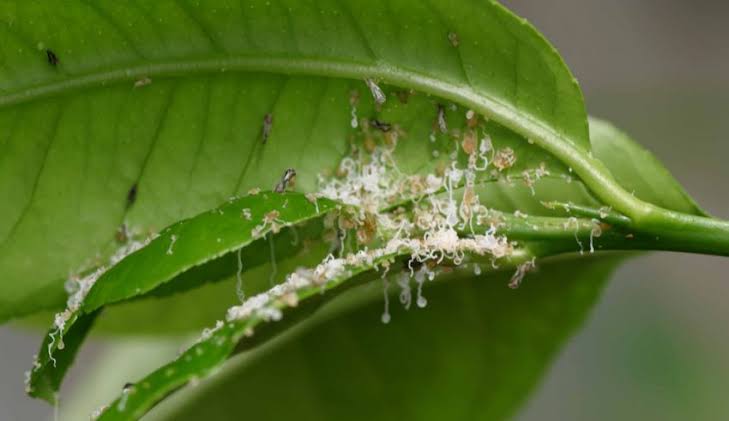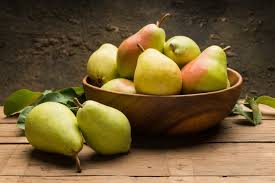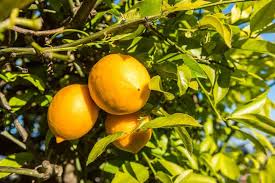Citrus Psyllid Insect: Description, Damages Caused, Control and Preventive Measures
The Citrus psyllid, scientifically known as Diaphorina citri, is a tiny insect that can have a big impact on citrus plants. These small creatures, usually about 3 to 4 millimeters long, feed on the sap of citrus trees by piercing the leaves with their needle-like mouthparts. This might seem like a minor inconvenience, but the real trouble lies in the fact that Citrus psyllids are carriers of a bacterium called Candidatus Liberibacter asiaticus.
This bacterium is responsible for a devastating disease known as citrus greening or Huanglongbing (HLB). Once a Citrus psyllid carrying the bacteria feeds on a healthy citrus tree, it transmits the pathogen, leading to the development of citrus greening disease. The consequences can be severe, as the infected trees produce misshapen, bitter fruit and often die prematurely.
Citrus greening has become a major concern for citrus growers worldwide. The disease has caused significant economic losses in the citrus industry, affecting both small-scale farmers and large commercial orchards. The spread of Citrus psyllids and the associated citrus greening disease pose a serious threat to the global citrus supply.
Efforts to control the Citrus psyllid and prevent the spread of citrus greening include the use of insecticides, biological control methods, and cultural practices. However, managing these pests is a complex challenge, as they can rapidly reproduce and adapt to various environmental conditions.
Research is ongoing to find sustainable and effective solutions to combat Citrus psyllids and citrus greening. Scientists are exploring new insecticide formulations, developing resistant citrus varieties, and studying the ecological interactions between the psyllids, the bacterium, and the citrus trees.
The Citrus psyllid, with its scientific name Diaphorina citri, may be small, but its impact on citrus crops is substantial. As a carrier of the citrus greening bacterium, this tiny insect poses a significant threat to the global citrus industry. Efforts to control and manage Citrus psyllids are crucial for ensuring the health and sustainability of citrus orchards worldwide.
Read Also: How to Grow, Use and Care for Woolly Cupgrass (Eriochloa villosa)
Plants Affected by Citrus Psyllid (Diaphorina citri)

The Citrus psyllid primarily affects citrus plants, including popular varieties such as oranges, lemons, limes, and grapefruits. These insects are particularly damaging to the health and productivity of citrus trees. When Citrus psyllids infest citrus plants, they feed on the sap, causing damage to the leaves and stems.
The most significant concern, however, is the transmission of Candidatus Liberibacter asiaticus, a bacterium associated with citrus greening disease (Huanglongbing or HLB). Once infected with this bacterium, citrus trees experience a range of symptoms, including yellowing leaves, misshapen and bitter fruit, and premature fruit drop. Ultimately, citrus greening can lead to the decline and death of infected trees.
Citrus growers worldwide face challenges in managing and controlling the Citrus psyllid to prevent the spread of citrus greening. The impact on the affected plants goes beyond visual symptoms, affecting the economic viability of citrus orchards and threatening the citrus industry as a whole. Therefore, efforts to mitigate the impact of Citrus psyllids on citrus plants are crucial for ensuring the health and sustainability of citrus cultivation.
Damages Caused by Citrus Psyllid

The damages caused by the Citrus psyllid, scientifically known as Diaphorina citri, are primarily associated with its role as a vector for the bacterium Candidatus Liberibacter asiaticus. Here are the significant damages inflicted by this tiny insect:
1. Citrus Greening Disease (Huanglongbing or HLB): The most devastating consequence of Citrus psyllid infestation is the transmission of Candidatus Liberibacter asiaticus, leading to citrus greening disease. Infected trees display symptoms such as yellowing leaves, stunted growth, and misshapen, bitter fruit. Citrus greening negatively impacts the overall health of citrus trees, reducing fruit quality and yield.
2. Reduced Fruit Quality: Citrus psyllids damage citrus trees by feeding on their sap, causing physiological stress. This stress often results in poor fruit quality, affecting attributes such as taste, size, and appearance. Misshapen and discolored fruit are common indicators of psyllid infestation.
3. Premature Fruit Drop: Infected citrus trees tend to experience premature fruit drop, where fruit falls from the tree before reaching maturity. This not only reduces the quantity of the harvest but also affects the economic viability of citrus orchards, as growers may incur losses due to diminished yields.
4. Tree Decline and Mortality: Prolonged exposure to Citrus psyllids and the citrus greening bacterium can lead to the gradual decline and eventual death of infected citrus trees. This poses a significant threat to the longevity and sustainability of citrus orchards, impacting both small-scale farmers and large commercial citrus operations.
5. Economic Losses: The damages caused by Citrus psyllids extend beyond individual trees to the broader citrus industry. Economic losses result from reduced crop yields, increased production costs associated with pest management, and the need for replanting orchards that succumb to citrus greening. The global citrus industry faces substantial financial challenges due to the economic impact of these damages.
Efforts to manage and control Citrus psyllids are essential to minimize these damages and sustain the health of citrus crops worldwide. Integrated pest management strategies, research on resistant citrus varieties, and the development of environmentally friendly control measures are key components of ongoing initiatives to mitigate the impact of this destructive insect.
Read Also: How to Grow, Use and Care for Woolly Sedge Grass (Carex pellita)
Control and Preventive Measures

Controlling and preventing Citrus psyllid infestations, along with the associated citrus greening disease, is crucial for the health and sustainability of citrus crops. Here are key measures used in integrated pest management strategies:
1. Insecticides: Application of insecticides is a common method to control Citrus psyllids. Systemic and contact insecticides are used, targeting different stages of the psyllid life cycle. However, careful consideration is needed to avoid negative impacts on beneficial insects and the environment.
2. Biological Control: Introducing natural enemies of Citrus psyllids, such as predatory insects like ladybugs and parasitoid wasps, can help control their populations. This biological control approach is more environmentally friendly and sustainable.
3. Cultural Practices: Implementing cultural practices can contribute to psyllid control. These include pruning infected plant material, removing and destroying abandoned citrus trees, and promoting overall orchard hygiene.
4. Resistant Citrus Varieties: Research is underway to develop citrus varieties that are resistant to both the Citrus psyllid and the citrus greening bacterium. Planting resistant varieties can be an effective long-term strategy to minimize the impact of the disease.
5. Vector Management: Targeting the psyllid vector is crucial in preventing the spread of citrus greening. This involves monitoring and managing psyllid populations through coordinated efforts among citrus growers and agricultural authorities.
6. Quarantine and Monitoring: Implementing quarantine measures in regions affected by Citrus psyllids can help prevent the introduction of infected plant material to new areas. Regular monitoring and surveillance are essential for early detection and rapid response to potential outbreaks.
7. Public Awareness and Education: Educating citrus growers, agricultural workers, and the general public about the importance of early detection, proper pest management practices, and adherence to quarantine regulations can play a significant role in preventing the spread of Citrus psyllids and citrus greening.
8. Research and Development: Ongoing research is crucial for the development of new and improved control methods. This includes the exploration of innovative technologies, such as gene editing for creating psyllid-resistant citrus varieties, and continuous improvement of existing control strategies.
Combining these measures in an integrated pest management approach, citrus growers and agricultural authorities aim to reduce the impact of Citrus psyllids and prevent the spread of citrus greening. The collaborative efforts of researchers, farmers, and policymakers are essential for effective control and mitigation of this significant threat to the global citrus industry.
Frequently Asked Questions (FAQs) About Citrus Psyllid (Diaphorina citri)
1. Q: What is the Citrus psyllid, and why is it a concern for citrus growers?
A: The Citrus psyllid (Diaphorina citri) is a small insect that feeds on citrus plants. It is a concern for citrus growers because it acts as a vector for the bacterium Candidatus Liberibacter asiaticus, which causes citrus greening disease, leading to significant damage to citrus crops.
2. Q: What are the symptoms of citrus greening disease caused by the Citrus psyllid?
A: Citrus greening disease symptoms include yellowing leaves, misshapen and bitter fruit, and premature fruit drop. Infected trees may also exhibit stunted growth and, if left untreated, can eventually die.
3. Q: How does the Citrus psyllid transmit citrus greening disease?
A: The Citrus psyllid transmits citrus greening disease by feeding on the sap of citrus trees infected with Candidatus Liberibacter asiaticus. The bacterium is then introduced into healthy trees through the psyllid’s saliva during feeding.
4. Q: Can Citrus psyllids be controlled using insecticides?
A: Yes, insecticides are commonly used to control Citrus psyllids. However, careful consideration is needed to avoid negative impacts on beneficial insects and the environment. Integrated pest management strategies, including biological control, are also employed.
5. Q: Are there citrus varieties resistant to Citrus psyllids and citrus greening disease?
A: Research is ongoing to develop citrus varieties resistant to both Citrus psyllids and citrus greening disease. Planting resistant varieties is considered a promising long-term strategy to reduce the impact of the disease.
6. Q: What are some cultural practices to control Citrus psyllids?
A: Cultural practices include pruning infected plant material, removing and destroying abandoned citrus trees, and maintaining overall orchard hygiene. These practices contribute to the management of Citrus psyllid populations.
7. Q: How can farmers monitor and manage Citrus psyllid populations effectively?
A: Farmers can monitor and manage Citrus psyllid populations through regular surveillance, implementing vector management strategies, and collaborating with agricultural authorities. Early detection is crucial for effective pest management.
8. Q: What role does public awareness play in preventing the spread of Citrus psyllids and citrus greening?
A: Public awareness and education are essential in preventing the spread of Citrus psyllids and citrus greening. Educating citrus growers, agricultural workers, and the general public about proper pest management practices and adherence to quarantine regulations is crucial.
9. Q: Is there ongoing research to find new control methods for Citrus psyllids?
A: Yes, ongoing research aims to develop new and improved control methods for Citrus psyllids. This includes exploring innovative technologies, such as gene editing, and continuous improvement of existing control strategies.
10. Q: How can regions affected by Citrus psyllids implement quarantine measures?
A: Regions affected by Citrus psyllids can implement quarantine measures by restricting the movement of citrus plant material, conducting inspections, and enforcing regulations to prevent the introduction of infected plants to new areas.
Read Also: Interview Tips for Agriculture-Related Positions









